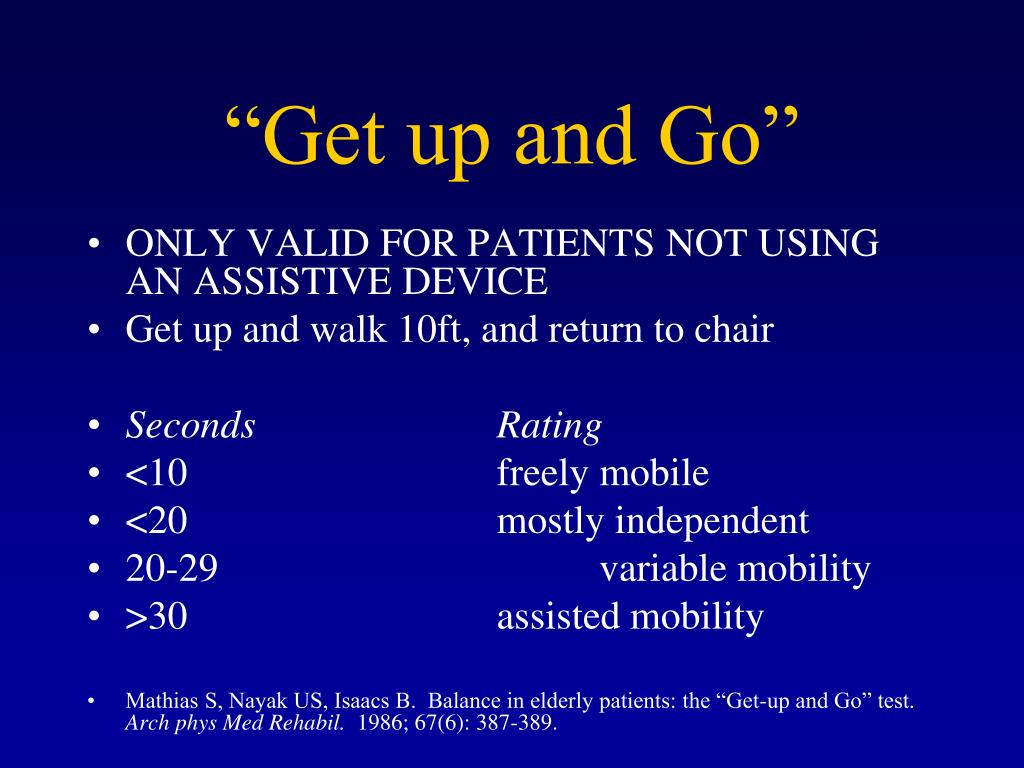

The TUG test was found to be more useful at ruling in rather than ruling out falls in individuals classified as high risk (>13.5 sec), with a higher pooled specificity (0.74, 95% CI 0.52-0.88) than sensitivity (0.31, 95% CI 0.13-0.57). Twenty-five studies were included in the systematic review and 10 studies were included in meta-analysis. Heterogeneity was assessed using the variance of logit transformed sensitivity and specificity. All included studies were combined using a bivariate random effects model to generate pooled estimates of sensitivity and specificity at ≥13.5 seconds. A TUG score of ≥13.5 seconds was used to identify individuals at higher risk of falling. The methodological quality of the selected studies was assessed using the QUADAS-2 tool, a validated tool for the quality assessment of diagnostic accuracy studies. MethodsĪ literature search was performed to identify all studies that validated the TUG test. The purpose of this systematic review and meta-analysis is to determine the overall predictive value of the TUG in community-dwelling older adults. The Timed Up and Go test (TUG) is a commonly used screening tool to assist clinicians to identify patients at risk of falling.


 0 kommentar(er)
0 kommentar(er)
